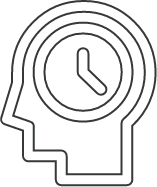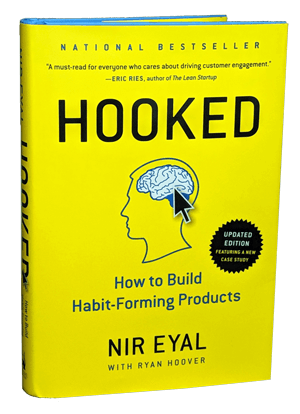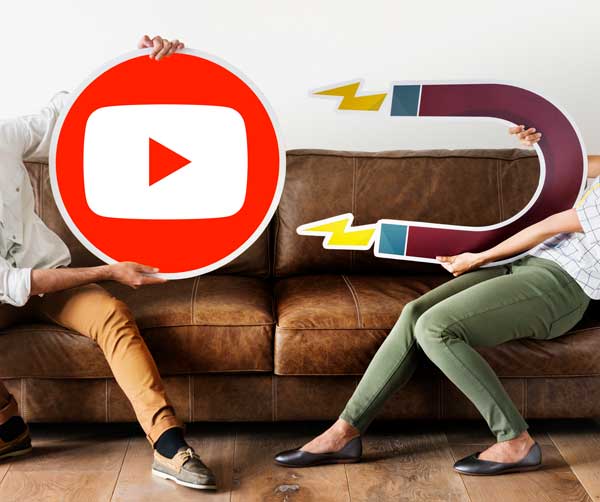
How to create the perfect user experience

At Appy Monkey, we are frequently asked what the ideal user experience consists of when it comes to apps. Almost half of the things people do during the course of a day are done out of habit. This helps to explain why so many people spend so much time scrolling through their social media apps and browsing the internet on their various devices every single day.

IF YOU ARE TO CREATE A GREAT APP
It needs to be good enough to get users returning to it time and time again
There is so much competition for people’s attention that it’s vital to stand out from the crowd and offer something truly immersive to your audience. Once you have gained a good understanding of how habits work, it becomes easier to create apps that become major parts of your audience’s lives. Once something becomes a habit, it becomes hard to shake off. This explains why so many people around the world spend so much time on sites like Facebook, Twitter and Instagram, worrying about ‘missing out’. The battle for our attention is becoming increasingly aggressive, and the amount of time we spend on social media sites is strongly linked to our constant need for entertainment and our content to be ‘liked’ by others.
A BOOK CALLED
“Hooked: How to Build Habit-Forming Products” by Nir Eyal
It is just one of several publications that demonstrate why companies are able to create products that audiences can’t help but use n a daily basis. In the book, he talked about a habit cycle that included the core elements of Trigger, Action, Reward, and Investment. Let’s take a closer look at these four elements right now.


1. Trigger
A trigger is something that makes someone use your app. A trigger will give them an urge to reach for their device and tap the icon linked to your app. Triggers can come in external and internal forms. An external trigger can come in the form of a notification or another prompt from outside, whereas an internal trigger comes from themselves. Boredom is an example of an internal trigger. When you explore the world of triggers, you can work why users are drawn to your app and what has caused them to open it.

2. Action
Once the internal or external trigger has been received buy a user, an action usually occurs. The action you want them to carry out is to log into your app and use it.

3. Reward
Users must feel rewarded when they decide to use your app. They should normally feel happy or entertained when they decide to open it. They might experience a dopamine rush, which makes them feel good and encourages them to continue returning to it. Many people experience this when they receive positive notifications on social media which tell them someone approves of one of their photos or comments. If your app doesn’t deliver emotional rewards, the chances of them returning to it frequently will be low. The more rewards your users experience, the more they will use your app.

4. Investment
If users feel they are seeing a return on investment when they use your app, they are likely to carry on using it. If they have paid for it or spent a great deal of time on it, they should feel that their investment has been worth it. Writing content, providing data and uploading photographs can all be seen as investments, so it’s essential that people feel rewarded for carrying out these actions.
How this system is used by social media services
The big social media sites owe much of their success to the way they have used the Trigger, Action, Reward and Investment system. Social media platforms play a huge roles in our lives today, with a huge number of us checking our feeds first thing in the morning and just before we retire for the night. These social media giants know all about the Trigger, Action, Reward, and Investment system, ensuring they benefit from the way our minds work as much as possible.

The notifications that we receive from Facebook can deliver a huge feeling of anticipation. We may be alerted to a notification via red icon, a buzz or a sound. There’s always a big chance you are being alerted to positive news such as a ‘like’, ‘share’ or approving comment. Few people can put off finding out what the nature of the notification is once they receive it. Once we have invested time and effort in sharing content, we become eager to see what kind of feedback it has generated. Many people post images that carry deep meaning for them, such as family photos. When people like or comment on these photos, we tend to experience rich emotional rewards. Facebook ensures the moments captured in these images can be preserved.
Once we have a substantial number of friends, we start to feel like we are part of a thriving and vibrant community, and will normally start to like and comment on other people’s photos, which makes the sense of community seem even more powerful. Humans are naturally interested in other people’s lives, and Facebook allows us to learn about them in a highly absorbing way, offering a diverse mix of photos and videos as well as text-based posts. When we spent time away from Facebook we may start to feel lonely and eager to re-immerse ourselves in our digital community as soon as possible. This may explain why self-imposed Facebook breaks rarely last very long.

YouTube
Traditional, linear TV programming is nowhere near as popular as it once was. Today, we are increasingly creating our own schedules and watching films and TV at times that suit us rather than when they are broadcast. Many people are spending much less time watching traditional TV, instead watching a host of short clips on video streaming sites like YouTube. YouTube can provide us with answers to virtually any question our daily lives might throw at us, with visual content helping us understand certain things much more effectively than simple text-based content can. It’s said that YouTube has 1.3 billion users, and that 300 hours of video is uploaded to the site every sixty seconds.
YouTube is also able to analyse our viewing history to create a tailormade viewing experience, recommending clips that it thinks will appeal to us based on our existing site activity. As soon as we log into YouTube, we are met with thumbnails for clips that we are likely to enjoy. When we start to feel bored and have our devices to hand, our internal triggers send us to sites like YouTube because they have come to associate them with entertainment. We can also make investments by saving videos to our channels and be rewarded by watching them later. When we spend time making videos, we are investing this time to experience rewards that come in the form of positive feedback and high view rates. It’s easy to see how YouTube now plays such a big role in our day-to-day lives.

Instagram is a Facebook-owned image sharing site. Many people use the site to keep up with the lives of the rich and famous, especially ones we aspire to be like. People frequently return to the site to share images of the happiest and most exciting moments in their lives, with rewards coming in the form of the likes and comments we generate. We may invest a great deal of time tweaking our photos to make them look as impressive as possible.

Pinterest is a leading source of ideas and inspiration. We can use the site to share images connected to certain concepts, products and services whilst browsing through appealing images posted by others. It is often described as a digital bulletin board or bookmarking tool and allows us to pin images we have found on and away from Pinterest to themed boards. When we click on images, we are often sent to pages that provide further information on the content. It has become particularly popular amongst food lovers seeking inspiration for recipes. It’s easy to save images that you like to the boards. You can also create your own boards and add your favourite ideas and images to them. Many users post images of things they are unable to access immediately but may go onto obtain or purchase later, in order to avoid losing or forgetting about them. Creating a board can be regarded as an investment, with the reward coming in the form of the inspiration experienced when we return to the content in question.
How can I create a reward system?
Facebook, Instagram and Pinterest are three of the most popular and addictive sites in the world, so it’s a tough ask to expect your app to be as effective as these apps. Nonetheless, you can take inspiration from these apps to make your app as user-friendly and engaging as possible. If your app has a friendly tone, makes people smile and generates conversation, there’s a great chance it will be a success. Try to come up with something that inspires, informs and stimulates ideas rather than leaving people feeling stressed or frustrated.
How can I deliver an excellent user experience?
Make sure content is easy to find. People need to be encouraged to share content on your app and enjoy content posted by others. Efficient AI systems and immersive quality content can help your app to grow in popularity. Once someone has created something with your app that they can’t easily find elsewhere, they are likely to continue using it.
Offer powerful triggers
Make sure your notifications, alerts and messages are powerful enough to get people clicking on your app and immerse themselves in the action.
Conclusion
We mustn’t underestimate the power of habit-forming. The more familiar people become with your app, the more they will use it. Many people feel overwhelmed by choice, so it’s vital to offer something that your users will prioritise over the competition.
At Appy Monkey, we can help you create a compelling app that drives engagement and is used by your audience on a daily basis. Get in touch with us today to find out more.

